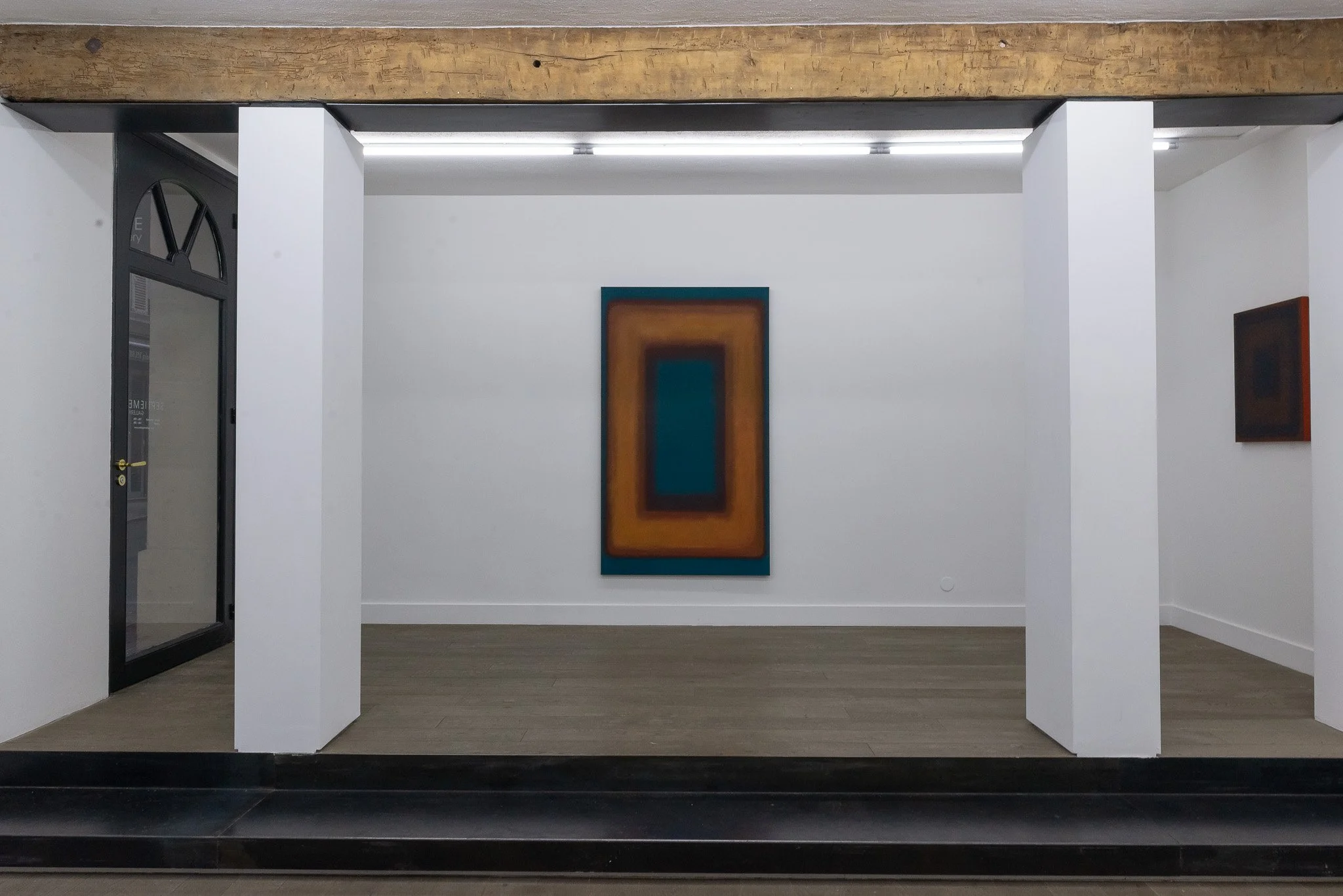Gabriel J. Bødker / Otherness
March 29th to April 1st 2024
Paris
Nigerian/Danish painter Gabriel J. Bødker (b.1997). Bødker’s unique soak-stained paintings have earned him recognition on the European emerging art scene. The artist’s early involvement in technical production for music events and raves led him to work in the Australian outback as a technician for geophysical surveys. The stark, life-scarce landscapes he encountered, coupled with the solitude and the digital disconnect, steered him towards painting. A self-taught abstract artist, Bødker’s works are not mere depictions of the outback but interpretations of landscapes and the impact of his experience of feeling redundant in terms of being human in such surroundings. His art is a reflection of the human experience when introduced to large fields of colour, influenced by the isolation of his time away from civilisation. On his return to Copenhagen, Denmark, Bødker found himself producing work which was not a portrait of the landscape he had experienced. Rather, his new paintings were an attempt to translate the experience onto canvas. This latest collection marks a significant departure from the artist’s previous focus on typography and graphics. It emerges from a unique experience. As a creative individual immersed in an environment with minimal distractions and no predetermined agenda - a direct response to the artist’s deep engagement and absorption of his surroundings. The artist was not in the outback as a sensation-seeker, or to answer deep questions, and he wasn’t just passing through either. He was not an intrepid derring-do polar explorer or an ocean-going deck officer, not even a climatologist doing science in Antarctica. He was not in the mould of famous priests such as the spiritually-driven desert monk in Saharan Algeria [Michel Foucauld], or the mystical paleontologist musing on the Gobi desert [Pierre Teilhard de Chardin]. Bødker was not passing through the outback, not much involved in excitement, nor undertaking intellectual or spiritual exercises. He was moved by an unexpected experience: being in an extraordinary place - with nowhere else to be or to go.
The paintings he produced are as much representations of his interiority as of the vast exterior world he was so free to absorb. One can speculate that his abstract minimalism was a sort of renunciation: he didn’t want to recreate the world around him. Nor did he want to draw on the technological stores so available to everyone now and which he knew so well. A phone could capture reality, and manipulate it, because it had millions of lenses and cells which could digitise the varieties of light bouncing off the world. Better, for his present purposes, to eschew the equipment which he worked with for his living, whether in music venues or the desert. The artist’s eye, mind and hand would work with tools and materials of ancient origin.
Bødker is a perfectionist. Selecting materials becomes as obsessive as choosing paints. He admits he became very fastidious about the raw blank canvases which were his tabula rasa. Trying dozens of different types before settling on one which seems to work well as the landing place for his mark-making, and becomes a passive but vital partner in making art. He is a soak-stainer in the footsteps of Helen Frankenthaler, the painter for whom the absorptive properties of canvases were a major preoccupation, at once a matter of technicality and craft.







